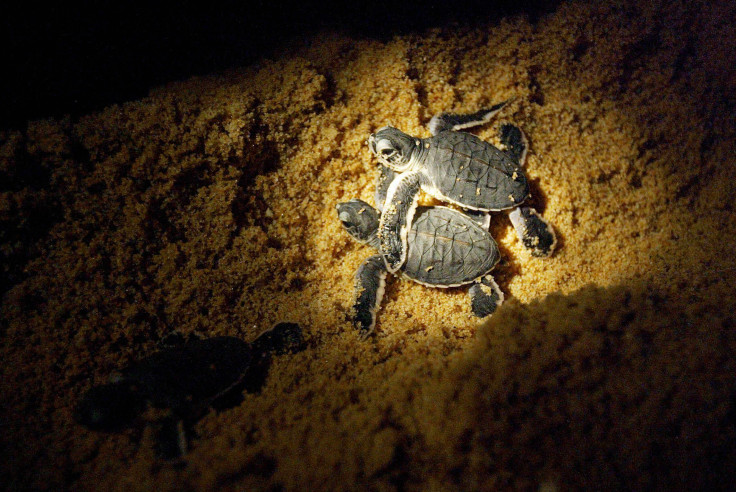Leatherback Sea Turtles’ Endangered Status May Change After Petition

A group of fishers has petitioned government agencies to remove the endangered status of leatherback sea turtles in the northern Atlantic.
Although the creature has suffered population losses around the world, a fisher advocacy group is arguing that in one particular region the sea turtle “is not in danger of extinction throughout its range, and therefore should be listed as threatened” instead of endangered under the Endangered Species Act, according to a petition filed in December. Its assertion is that the leatherbacks in the northwest Atlantic — along the eastern coast of the United States — are a distinct population of the turtles and should be reclassified to a lower protective status.
A spokesperson for the National Marine Fisheries Service, which falls within the National Oceanic and Atmospheric Administration, told International Business Times that “the petition presents substantial scientific and commercial information indicating that the petitioned actions may be warranted” — putting stress on the “may.” Both this group and the U.S. Fish and Wildlife Service are investigating whether “distinct population segments do exist and their status under the [Endangered Species Act].”
The investigation will incorporate “significant new information that has become available since the original listing of the species,” which occurred in 1970.
The groups are accepting comments through Feb. 5.
The Blue Water Fishermen’s Association, a trade organization based in New Jersey, is the fisher advocacy group behind the petition, but this reporter’s attempts to contact the group for comment were unsuccessful.
Leatherback turtles have come into conflict with fishers because they can get caught up in gillnets and other trapping equipment.
According to NOAA, they additionally face threats from pollution, because they can mistake plastic bags for jellyfish and eat them, and from people capturing them and harvesting their eggs on nesting beaches. Habitat loss also plays a role.
The administration lists the Pacific leatherbacks as being at the greatest risk because populations in that ocean are still declining, while groups in the Atlantic, Caribbean and Gulf of Mexico have seen some gains after a period of decline.
Leatherbacks, which go back to the time of the dinosaurs, are the world’s biggest turtle, growing as massive as 2,000 pounds and 6.5 feet long. Their name comes from their tough skin, which protects their bodies because they don’t have hard shells.
© Copyright IBTimes 2024. All rights reserved.





















